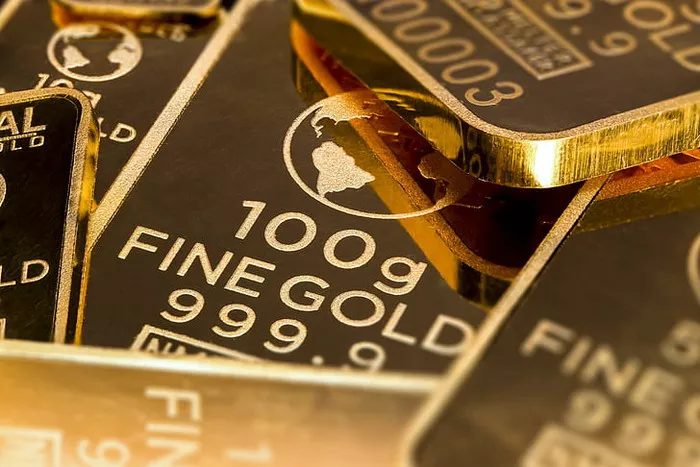The price of gold is a topic that has intrigued investors and traders for centuries. Understanding how the gold spot price is determined is essential for those interested in gold investing. Today, we will delve into the factors that influence the gold spot price, the key players in the gold market, and the mechanics of price discovery.
What is the Gold Spot Price?
The gold spot price refers to the current market price of gold for immediate delivery. It represents the price at which gold can be bought or sold on the spot, meaning there is no delay or future settlement involved. The spot price serves as a benchmark for global gold trading and is influenced by various factors.
Factors Influencing the Gold Spot Price:
- Supply and Demand:
Like any commodity, the supply and demand dynamics play a significant role in determining the gold spot price. Gold supply primarily comes from mining production, central bank reserves, and recycled gold. Demand for gold stems from jewelry, investment purposes, and industrial uses. When demand outpaces supply, the price tends to rise, and vice versa.
- Economic Data and Market Sentiment:
Economic indicators, such as GDP growth, inflation rates, interest rates, and employment data, impact the gold spot price. In times of economic uncertainty or geopolitical tensions, investors often flock to gold as a safe-haven asset, driving up demand and prices. Market sentiment, influenced by factors like investor confidence and risk appetite, can also impact gold prices.
- Currency Strength:
The value of the currency in which gold is denominated affects its price. When the value of a currency declines, it takes more units of that currency to buy an ounce of gold, resulting in a higher gold spot price. Gold is often considered a hedge against inflation and currency devaluation.
- Central Bank Actions:
Central banks hold significant gold reserves, and their buying or selling activities can influence the gold spot price. Large-scale purchases by central banks can drive prices up, while sales can put downward pressure on prices.
Mechanics of Price Discovery:
Price discovery refers to the process through which the gold spot price is determined. The gold market operates through various mechanisms, including:
- Over-the-Counter (OTC) Market:
The majority of gold trading occurs in the OTC market, where participants trade directly with each other rather than through a centralized exchange. Market makers, such as banks and bullion dealers, facilitate trades and help establish the spot price. They continuously quote bid and ask prices based on market conditions.
- Futures and Options Exchanges:
Gold futures contracts are traded on exchanges such as the COMEX (part of CME Group) and the Multi Commodity Exchange (MCX). Futures contracts allow participants to buy or sell gold at a predetermined price and date in the future. The futures market plays a role in price discovery, as the trading activity and sentiment in futures contracts can influence spot prices.
- London Bullion Market Association (LBMA):
The LBMA is a key player in the gold market, responsible for setting the London Gold Fixing, now known as the LBMA Gold Price. The LBMA Gold Price is set twice daily through a conference call involving major market participants. This benchmark price serves as a reference for global gold trading.
- Electronic Trading Platforms:
In recent years, electronic trading platforms have gained prominence in the gold market. These platforms allow traders to buy and sell gold electronically, providing greater accessibility and transparency to market participants. Electronic trading can contribute to price discovery, reflecting real-time supply and demand dynamics.
Price Transparency and Accessibility:
Price transparency is crucial for efficient price discovery in the gold market. The gold spot price is widely available through financial news outlets, market websites, and trading platforms. Various charts, historical data, and real-time updates enable investors to track price movements and make informed decisions about their gold investments.
Accessibility to the gold spot price has also improved with the advent of technology. Online platforms and mobile applications provide instant access to real-time gold prices, empowering investors to monitor market fluctuations and execute trades efficiently. This accessibility has opened up opportunities for individual investors to participate in the gold market alongside institutional players.
Key Players in the Gold Market:
- Producers:
Gold mining companies play a significant role in the gold market. They extract gold from mines and contribute to the overall supply. Mining production levels, exploration activities, and operational costs can influence the gold spot price.
- Investors and Traders:
Institutional investors, such as hedge funds, mutual funds, and pension funds, as well as individual investors, actively trade gold. Their buying and selling activities, driven by investment strategies and market sentiment, impact short-term price movements.
- Central Banks:
Central banks are major players in the gold market. They hold significant gold reserves as part of their foreign exchange reserves. Central bank actions, such as buying or selling gold, can influence market sentiment and prices.
- Bullion Banks:
Banks with significant gold trading operations, known as bullion banks, play a crucial role in facilitating gold transactions. They provide liquidity, offer market-making services, and participate in gold lending and leasing activities. Bullion banks also contribute to price discovery through their trading activities.
- Retail Investors:
Individual investors, including collectors, jewelry buyers, and small-scale investors, are an essential part of the gold market. They contribute to overall demand, particularly in the jewelry sector, and can impact prices through their buying and selling decisions.
Conclusion:
The gold spot price is determined by a combination of factors, including supply and demand dynamics, economic data, currency movements, and market sentiment. Understanding these factors and the mechanics of price discovery can help investors make informed decisions when investing in gold. While the gold market can be influenced by various players, from mining companies to central banks and individual investors, price transparency and accessibility have improved, empowering investors to participate in the market more effectively.


